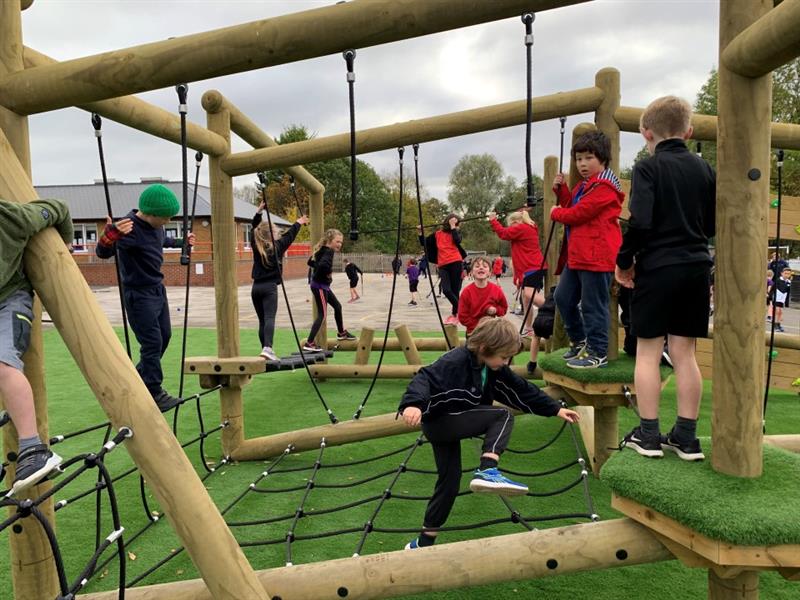
Advanced Strategies for Active Play That Save Time
In today’s fast-paced world, finding the time for physical activity can often seem like a luxury. Between work, family obligations, and the endless list of responsibilities, carving out time for exercise and play can feel like an overwhelming task. However, integrating active play into your daily routine doesn’t have to be an all-consuming endeavor. In fact, with the right strategies, you can maintain a healthy, active lifestyle without dedicating hours to the gym or rigid workout plans.
Active play is a form of exercise that doesn’t feel like a chore—think of it as a fun, engaging way to move your body and get your heart pumping. Whether it’s participating in a sport, playing games with friends or family, or even just engaging in playful activities during the day, the benefits are manifold. Not only does it improve physical fitness, but it also has mental health benefits, reduces stress, and enhances social bonds. The key lies in finding efficient, time-saving strategies that allow you to stay active while still being productive.
This article will explore advanced strategies for incorporating active play into your life in ways that save you time and maximize the benefits. These methods are designed for individuals who want to get the most out of their time while maintaining a commitment to an active lifestyle.
1. Incorporate High-Intensity Interval Training (HIIT) with Playful Activities
High-Intensity Interval Training (HIIT) is a time-efficient exercise method that alternates between short bursts of intense activity and brief rest periods. HIIT is already known for its ability to torch calories and improve cardiovascular health in a short amount of time, but what if you could make it even more enjoyable by incorporating playful elements?
You don’t need to be confined to the monotony of a treadmill or stationary bike. You can implement HIIT strategies into activities like playing tag, doing jumping jacks while watching TV, or creating your own obstacle course in the backyard. For example, sprinting between cones or having a competition of quick exercises like burpees or squats with a friend can deliver the same benefits as a traditional HIIT workout in half the time.
By pairing high-intensity exercise with fun activities, you can burn calories, improve endurance, and increase overall fitness without needing to block off a full hour for a gym session.
2. Multi-Task by Combining Play with Social Activities
One of the most powerful time-saving strategies is multi-tasking. Instead of scheduling a separate time for socializing and physical activity, why not combine both? Participating in active play while socializing can save valuable time while strengthening bonds with friends and family.
Consider engaging in activities such as beach volleyball, frisbee, hiking, or even playing a sport like tennis or basketball. These games and activities keep you moving while also providing opportunities to connect with others in an informal, fun setting. Not only do you improve your physical fitness, but you also boost your mood through social interaction.
By weaving active play into your social calendar, you can save time and deepen relationships, all while staying active. These are the types of strategies that make fitness sustainable over the long term because you’re combining two important aspects of life—health and connection.
3. Maximize Play During Daily Activities
Active play doesn’t have to be confined to specific workout times. You can create opportunities for movement throughout your daily life by making slight adjustments to how you approach regular tasks. The key is to find ways to integrate physical activity in moments you would otherwise spend sedentary.
For example, if you have kids, turn playtime into a physical activity. Play games that encourage running, jumping, or climbing, such as hide-and-seek, scavenger hunts, or even just dancing around the living room. For adults, take the stairs instead of the elevator, walk or bike to nearby errands instead of driving, or even stand while working at a desk.
If you work from home, find ways to set “movement breaks.” You might play a quick game of “dance-off” during lunch breaks or set a timer to remind yourself to walk around the house every 30 minutes. This type of spontaneous movement is a powerful strategy to stay active without needing extra time to be allocated solely for exercise.
4. Leverage Technology to Engage in Virtual Active Play
With the rise of virtual and augmented reality (VR and AR) technologies, there’s a whole new realm of opportunities for active play. VR games like those available on platforms like Oculus Rift, PlayStation VR, or even on mobile devices can provide an engaging workout while saving you time and offering variety in your routine.
From virtual boxing and tennis to dance-offs or even immersive adventure games that require you to physically move through the environment, virtual play can be both fun and beneficial. Many VR fitness games are designed to be high-intensity, helping you burn calories while staying entertained. For those with limited space or a tight schedule, this is an excellent way to stay active without leaving the house.
Even mobile apps like Zombies, Run! turn your run or walk into an engaging, gamified experience, where you can “escape” from zombies while completing your workout. Using technology in these ways allows you to engage in physical activity in creative, enjoyable, and time-efficient ways.
5. Incorporate Mindful Movement Practices
Mindful movement practices like yoga, Pilates, or tai chi provide a more holistic form of active play. While they may not always provide the high-intensity exercise that some athletes or fitness enthusiasts crave, they are exceptional for reducing stress, improving flexibility, and enhancing overall well-being.
The beauty of these activities lies in their ability to deliver both physical and mental benefits in a compact time frame. For example, a 20-minute yoga session or tai chi flow can leave you feeling refreshed, relaxed, and more connected to your body without requiring hours of commitment. Additionally, these practices can be done in a variety of settings, whether in a park, at home, or during a lunch break, making them easy to incorporate into busy schedules.
The mindfulness aspect of these activities helps counterbalance the physical demands of daily life, providing mental clarity and reducing stress, which can ultimately improve both your physical and mental performance in all areas of life.
6. Use Circuit Training with Playful Movements
Circuit training is another time-saving strategy that can be easily adapted into active play. Traditional circuit training involves performing a series of exercises, one after another, with minimal rest in between. Instead of relying on weights or machines, incorporate playful movements like jumping rope, playing hopscotch, or doing “bear crawls” or “crab walks” between stations.
This method allows for a full-body workout in a short amount of time while keeping the experience fun and engaging. You can set up stations that require you to do different movements, making it a playful, game-like experience that also provides all the benefits of a high-intensity workout.
For example, you could alternate between jumping jacks, sprinting to a nearby tree and back, playing a game of catch with a friend, and doing push-ups or squats. Keep things dynamic by changing up the exercises regularly to maintain interest. Circuit training allows you to optimize your time by working multiple muscle groups simultaneously while keeping things fresh and exciting.
7. Adopt the “Play” Mindset for Everyday Fitness
One of the most advanced strategies is simply shifting your mindset. If you begin to see exercise as a form of play rather than a time-consuming obligation, you’re more likely to engage in it frequently. Finding joy in physical activity turns fitness into something enjoyable, rather than something that requires willpower or discipline.
For example, instead of seeing a walk or run as a means to an end, think of it as a playful adventure. Explore new trails, take detours, or set small challenges for yourself—perhaps by timing your jogs, racing your shadow, or tracking your route through a map app. Playfully exploring your environment can make the activity feel like a fun exploration, rather than a mere workout.
Conclusion: The Power of Active Play
Time is a finite resource, and many of us struggle to balance the demands of daily life with the need for physical activity. However, by adopting advanced strategies like HIIT combined with play, incorporating movement into social interactions, and using technology for fun, you can create a sustainable and enjoyable active lifestyle. These methods allow you to engage in physical activity without sacrificing precious time or energy, all while enhancing your health, fitness, and mental well-being.
The most important takeaway is that active play doesn’t have to be complicated or time-consuming. It can be as simple as making small adjustments to your daily routine, re-framing your approach to exercise, and finding ways to have fun while staying active. In doing so, you’ll enjoy the benefits of an active life without feeling overwhelmed or deprived of time.



